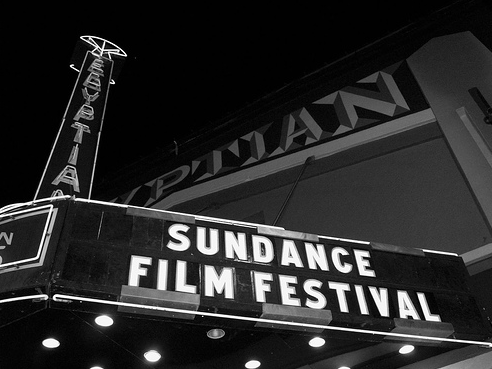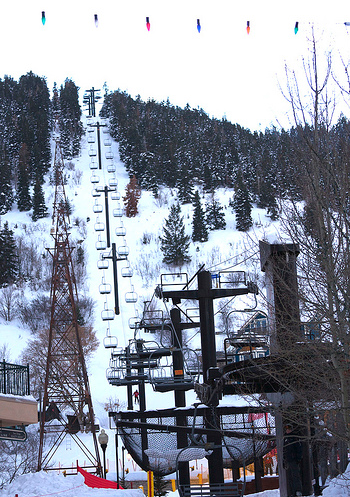
As a filmmaker, your web site is one of the best marketing tools you have. Long before the lights go down at your first screening, your web site is where people will learn about you and your film. Months (years!) after the festival ends, your movie's site will be the touchstone for those curious about your work. Dollar for dollar, there is nothing else you can buy that will work for your movie as tirelessly and as effectively as the electronic sentinel that is a web site.
So make it good.
One of the best collections of advice for filmmakers I've encountered about their web sites comes from my friend Jette Kernion in her
Open Letter to Indy/Low-Budget Filmmakers. Go ahead, click on over and read it. I'll wait.
Back again? Good. I hope Jette's words are sinking in and that you're ready to build a web site that isn't just attractive but useful as well. Let's review her advice with a few extra pointers.
» Include lots of text about the film, including the names of the cast and crew, so that the site shows up in Google searches. The fancy name for this is "search engine optimization," but the plain truth is that search engines grab onto text best. If you're rendering that text as graphics or you've embedded it into a Flash presentation, you could be shooting yourself in the foot. Keep it simple and leave the flaming logos to the site for the next
Tomb Raider film.
» Post a number of striking photos at different resolutions, and make them easily available for download. The less you make a journalist (whether an editor from
Variety or a local blogger) work, the more likely you are to get good coverage. Cropping screen captures is work. Resizing photos is work. I think you can figure out the rest. Again, don't hide them inside a PDF, a fancy Flash slideshow, or assume that a trailer is a sufficient substitute for still photos. If you want the word to spread, you have to make the spreading easy.
» Publish your contact info, including e-mail, telephone, and snail mail. Your web site is your business card to the world. If the world can't get in touch with you, it can't write nice stories about you. Or ask you about a new job on a film crew. Or buy your movie. So get your contact info out there, and get a good spam filter. (I recommend using
gmail.)
» Post a trailer. Or five. Any halfway entertaining footage (bloopers, deleted scenes, etc) that didn't actually make it into the film should be present somewhere on the site. Include links to your previous work, especially short films that can be digested quickly and easily online. Make sure your trailer is on YouTube or a similar video site so that visitors can post it on their own web sites and blogs. (Get familiar with the mantra "
Embed and Spread." It works.) Give away as much free entertainment as you can, because it's the way you win fans who will later pay to see your work.
 » Start a blog
» Start a blog. Yeah, you read that right. A blog. Most filmmakers like the idea of starting a blog but don't have a clue what to put in it. I'll cover that more in a later post, but for now start posting stories about the making of the film. Profile your cast and crew. Mention your other projects. Announce your upcoming screenings. Post recaps of your question-and-answer sessions. If your film is a documentary, post news about your doc's subject. (You can even get
Yahoo News to email you the latest stories on your subject of choice.) It's a big world out there, and there's lots to talk about. A blog provides your fans with a reason to come back, so even if you just post once a week,
post.» Ask visitors to sign up for email updates. Both
Yahoo Groups and
Google Groups offer easy-to-run mailing lists where your visitors can subscribe to the latest news about your film. If you want more control over your e-mail newsletter, use a service like
MailChimp for a more professional touch. Updates should be more selective than, say, your blog, but once or twice a month is fine if you have something to say. Be sure to announce upcoming screenings in your e-mails, and mention the existence of your blog. Every e-mail you send to the list should have a link to your web site.
» Take advantage of existing social networks. People spend hours each day on services like
MySpace and
Facebook; insert yourself there and take advantage of the tools they provide. A
MySpace page isn't a substitute for a real web site, but you'd be foolish not to have a presence there at all. Ditto for Facebook. Sign up for a number of social networking sites -- as many as you can reasonably manage -- and duplicate your content across the services. Check out the sidebar on
the web site for Four Eyed Monsters -- they have pages and profiles everywhere. Just make sure your profiles all link back to the mothership: your main web site.
» When you start receiving reviews, post complimentary quotes from those reviews on your site and link back to them. E-mail the author of the review mentioning your link and ask for a link back. You should be doing periodic Google searches for your film's title to find the latest mentions of your movie. Anywhere you find your film referenced, e-mail to make sure that an accompanying link is included.
» Your web site address or "URL" should end in
.com. It should also be as simple and easy to remember as possible. In these days when every conceivable web address seems taken that can be a challenge, but do your best. Then spread the URL everywhere. It should be on all of your printed material and
most especially in the signature of every email you send. Think about all the emails you send out in a day -- sometimes even your friends and family need to be reminded of your film's existence.
» Start a links section and link to your favorite films on the festival circuit. Link to your friends' films and projects, and ask them to link back. Yeah, a link exchange is pretty 1997, but you know what?
It still works.» Don't just set it and forget it -- a web site needs tending. Think of it as your end of an ongoing conversation with your audience. If you don't hold up your end of the conversation, the audience will get bored and move on.
» You don't have to do it all yourself. This all probably sounds like a lot of work, and you're not wrong. But you don't have to learn HTML or CSS or programming, and you don't have to write every word of content on the site. Recruit from within your crew or elsewhere in your personal network. Chances are your girlfriend's brother is just the nerd you need to get your film's web site up and running. You just have to ask.
This is part two of a revised series of articles originally written for South by Southwest 2008. The revisions add new and updated information and make the series more applicable to other festivals.Read part three - before you leave home.Missed part one of the filmmakers last-minute tips? It's right here.
(Disclosure - both Four Eyed Monsters and Blood Car, referenced in the screen captures above, are represented in some fashion by my employer, B-Side Entertainment.)


 » Take advantage of panels and screenings. Keep a detailed calendar so you always have options if you're not actively promoting your film. At a large festival, the first half of the event is usually the busiest, so you should stick close to the center of the action to squeeze in as many interviews and marketing activities as possible. When you're not doing those things, check out the screenings and panels (if any). Even the occasional clunker of a panel will have some interesting people at the front of the room, so stick around afterwards and introduce yourself. With journalists and industry types alike, the phrase "I have a film in the festival this year" is the perfect icebreaker: it identifies you as someone with talent and of potential interest. Use it to your advantage.
» Take advantage of panels and screenings. Keep a detailed calendar so you always have options if you're not actively promoting your film. At a large festival, the first half of the event is usually the busiest, so you should stick close to the center of the action to squeeze in as many interviews and marketing activities as possible. When you're not doing those things, check out the screenings and panels (if any). Even the occasional clunker of a panel will have some interesting people at the front of the room, so stick around afterwards and introduce yourself. With journalists and industry types alike, the phrase "I have a film in the festival this year" is the perfect icebreaker: it identifies you as someone with talent and of potential interest. Use it to your advantage. The press have a job to do: present the most interesting news to their audience before their competitors do. In order to make sure you get good coverage, you need to make their job as easy as possible. That's where
The press have a job to do: present the most interesting news to their audience before their competitors do. In order to make sure you get good coverage, you need to make their job as easy as possible. That's where  » Take good notes. I mentioned this in passing
» Take good notes. I mentioned this in passing 



 #2 - Screening flyers. When you introduce yourself as a filmmaker with a film in the festival, the very next question is usually "what's it about?" and hopefully followed by "when's it playing?" Your screening flyers should contain that information, though you should take the opportunity to answer the questions personally. Follow up the conversation by handing over a flyer with a smile and a question of your own: "Will you come see my film?" Personal commitments like these may be your best chance of filling your screening, so you should always ask. If they say yes, say "I'm looking forward to seeing you there!" If they say no or are non-commital, point to the flyer and ask them to hang onto it just in case they find their prior engagement has fallen through.
#2 - Screening flyers. When you introduce yourself as a filmmaker with a film in the festival, the very next question is usually "what's it about?" and hopefully followed by "when's it playing?" Your screening flyers should contain that information, though you should take the opportunity to answer the questions personally. Follow up the conversation by handing over a flyer with a smile and a question of your own: "Will you come see my film?" Personal commitments like these may be your best chance of filling your screening, so you should always ask. If they say yes, say "I'm looking forward to seeing you there!" If they say no or are non-commital, point to the flyer and ask them to hang onto it just in case they find their prior engagement has fallen through.